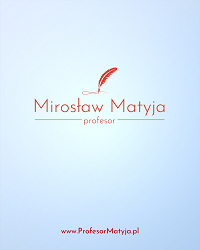Lighting as an Aspect of Cinematography in Transforming African Oral Traditions to Modern Media and its Psychological Effects using Kúnlé Afọláyan’s Aníkúlápó
Abstract
Lighting is a significant component of cinematography, which influences viewers' visual, psychological and emotional experiences. With an emphasis on Kúnlé Afọláyan's 2022 film Aníkúlápó, this paper explores the crucial role that lighting plays in converting African oral traditions into contemporary cinematic storytelling. Lighting becomes a crucial visual language that transmits ideas, emotions, and cultural subtleties that were previously expressed through speech, gestures, and surroundings when oral storytelling moves from traditional forms to the medium of cinema. Lighting in Aníkúlápó invokes the spiritual and moral aspects of African oral storytelling in addition to illuminating sights. While artificial lighting heightens the dramatic tension and highlights crucial moments of love, treachery, and divine intervention, the deliberate use of natural light highlights the film's ties to Yoruba cosmology and traditional locations. A psychological effect is produced by the way light and shadow interacts, engrossing viewers in the story and bringing them closer to the ancient world. This research investigates the many ways in which different lighting strategies captivate viewers. Lighting not only supports the visual narrative but also strengthens cultural memory and identity by emphasizing cultural symbols and enhancing emotional depth. Additionally, the psychological impacts of lighting are examined, with a focus on how it might emotionally engage viewers and help them develop a stronger bond with the stories. Afọláyan illustrates through Aníkúlápó how lighting unites contemporary cinematic expression with traditional African narrative, converting oral traditions into visually striking and culturally relevant media.
Keywords
Full Text:
PDFReferences
Abiodun Olayiwola, “Nollywood at the Borders of History: Yoruba Travelling Theatre and Video Film Development in Nigeria”. The Journal of Pan African Studies, vol.4, no.5, 2011.
Brown, B. Cinematography: Theory and Practice. New York: Routledge. 2016.
Ekwuazi, H. Film in Nigeria. Jos: National Film Institute Press. 1991.
Femi Adebayo (2022), Aníkúlápó. Kap Motion Pictures, Golden effects. NETFLIX
Hadjoui Ghouti , “African Oral Tradition: The Strength of Modern Literature”, International Conference on Advances in Education and Social Sciences, 2015.
Haynes, J. Nollywood: The Creation of Nigerian Film Genres. Chicago: University of Chicago Press. 2016.
Katz, S. (1991). Film Directing Shot by Shot: Visualizing from Concept to Screen. Studio City: Michael Wiese Productions.
Kunle Afolayan, Anikulapo. Film. 2022.
Sampsa Huttunen, “Ecological Approach to Cinematographic Lighting of the Human Face – A Pilot Study”. Baltic Screen Media Review, Vol.10 Issue 2, 2022.
Smith, R., & Yi, L. “The Psychological Impact of Lighting in Cinematic Narratives”. Journal of Film Studies, 15(3), 45-61. 2020.
The film
Ukadike, N. F. "African Aesthetics and the Use of Symbolism in Film." Journal of African Cultural Studies, 15(1), 73-90. 2002.
DOI: https://doi.org/10.33258/birle.v8i3.8115
DOI (PDF): https://doi.org/10.33258/birle.v8i3.8115.g7955
Article Metrics
Abstract view : 0 timesPDF - 0 times
Refbacks
- There are currently no refbacks.

This work is licensed under a Creative Commons Attribution-ShareAlike 4.0 International License.

This work is licensed under a Creative Commons Attribution-ShareAlike 4.0 International License

_.gif)



















_.gif)



